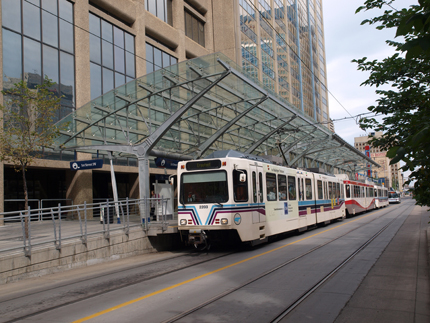While the current LRT system can best be described as a “suburban” system, the LRT Network Plan calls for a change in approach to an “urban” LRT system. It is designed to fit into neighbourhoods and promote development all while balancing mobility needs with traffic flow. The urban approach improves connections between the LRT and city life.
An urban LRT system means:
- Building smaller scale stations that are spaced closer together
- Providing better links to a greater number of destinations, with more direct transit, pedestrian and cyclist connections
- Maximizing openness of space to create a safe environment
- Reducing speeds in congested areas to support safe pedestrian-oriented communities
- Investing in landscaping, streetscaping, and architectural features to improve visual appeal
High-Floor LRT Vehicles

Edmonton's existing LRT uses high-floor technology. Most of the mechanical equipment is located at the bottom of the vehicle, requiring elevated passenger doors and raised platforms/stations.
Low-Floor LRT Vehicles

As the City expands its LRT system, some new lines will use low-floor technology. Most of the equipment is located on the roof, meaning that passengers can board at street level. Low-floor technology is an industry standard for LRT systems worldwide.

